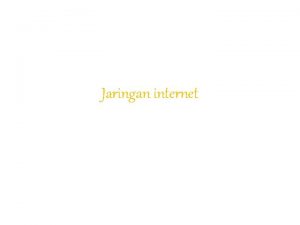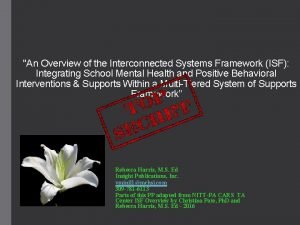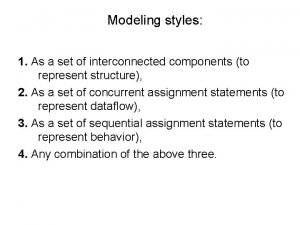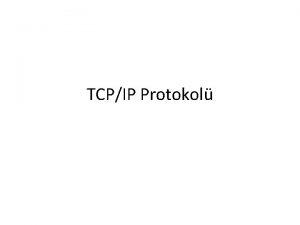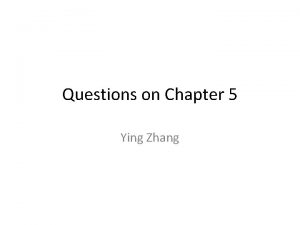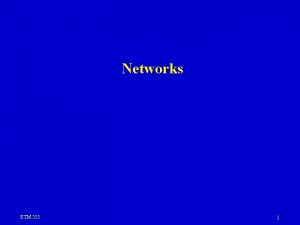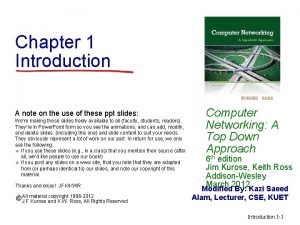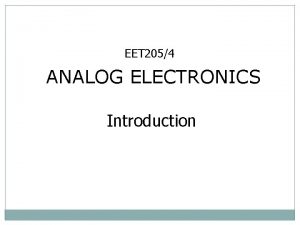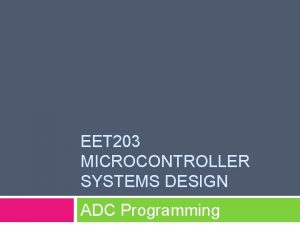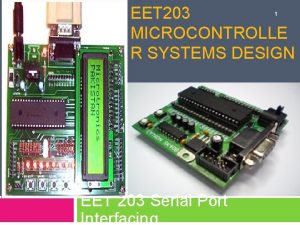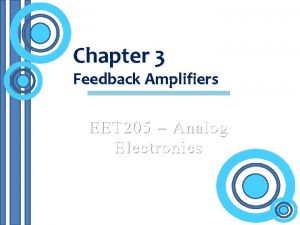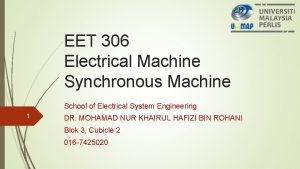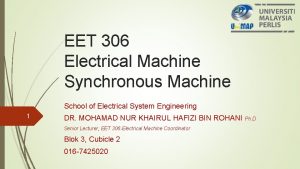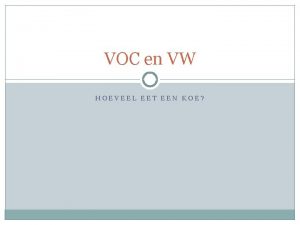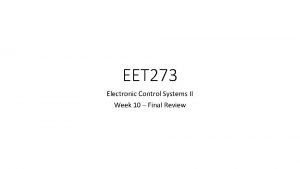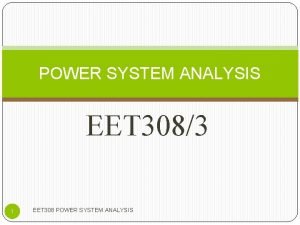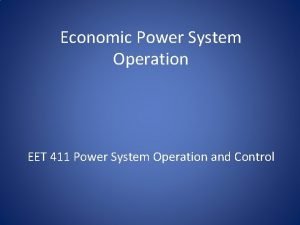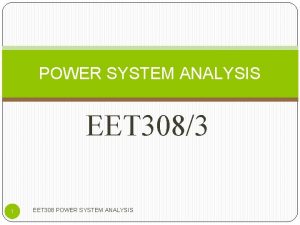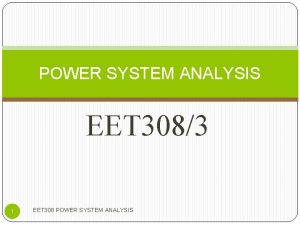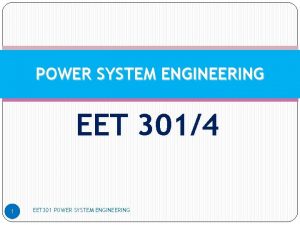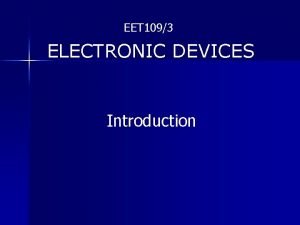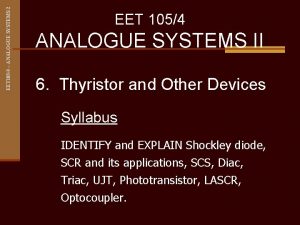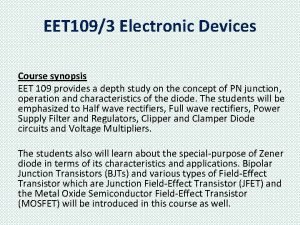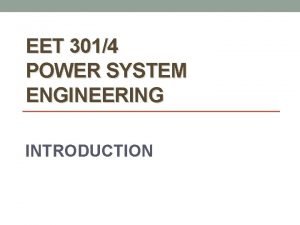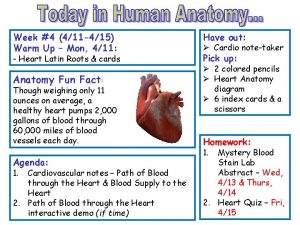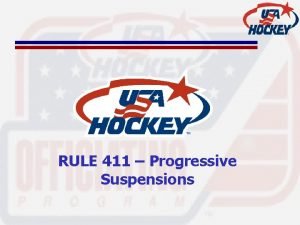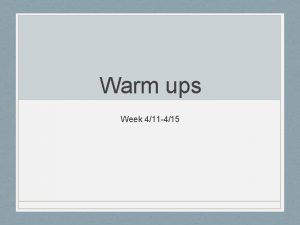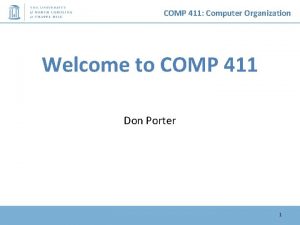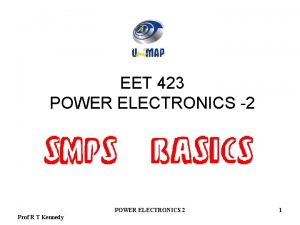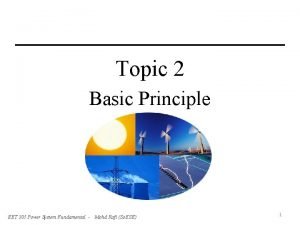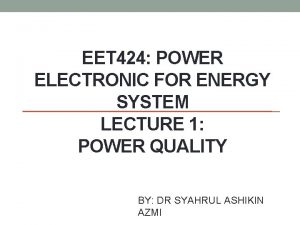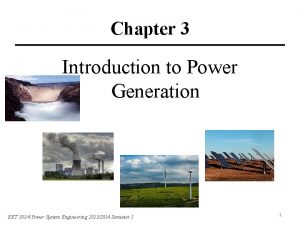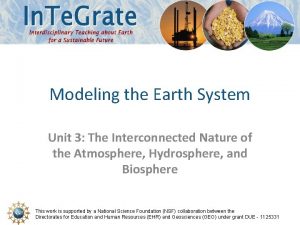Introduction to Interconnected Power System EET 411 Definition



























- Slides: 27

Introduction to Interconnected Power System EET 411

Definition of Interconnected Power System • Inter – connection between many power generating plants • Source of plants may not be important, as long as the load demand is covered • However, rapid start up/start down plants are preferred for fast response

• In the event of emergency/ power outage, interconnected system can continue to operate without failure • This is due to the inertia of the system’s power (stable, big capacity, supports from plants)

• All the generation units in each grid are synchronized together, sharing total load, and are providing very large, reliable power grids.

• Power plants at peninsular • National grid

Power plants (selected) at West Malaysia

• Asean interconnected power system (Malaysian Brunei and Indonesian parts)

Importance of Interconnected Power System Robust Security Interconnected Stability Reliable


Independent Power Producers, and authority roles • TNB as the main authority, as well as regional authority SESB and Sarawak Energy • TNB drafts the regulations, including regarding permissible fluctuations in voltage/ frequency • IPPs generate power as per requested in contractual agreements

Power scheduling and transportation G 1 G 5 Tie lines G 2 G 4 G 3

• Tie lines are the links between each and every generating plants • Schedule of power is decided by power plant owners/ authorities through demand data. Management is on 60 cycle per second (US) • Demand = daily demand • Net power through all tie lines MUST EQUAL ZERO (assuming no transmission loss) – using ACE (area control error)

• Loading of each generators are determined by the demand of loads, and frequency of system • By analogy, the lorries are the generators and their loadings are power generated • As the slope (demand) increases, the lorries need to accelerate (throttling up turbine) to maintain 50 kmh speed (frequency)

• Slope becomes too incline, additional lorry needs to be add up (adding another generators, adjusting frequency) • Slope becomes decline, lorries need to deaccelerate (reduce turbine throttle) • As significant loads are taken out, some lorries are not needed (less generators), in order to maintain frequency)

Grid Monitoring • Management of generating units are conducted using SCADA • Telemetry data are on cycle basis – demand, disturbances, shortage, capacity, etc • Controls include switching operation controls (isolating lines/ transformers), shunt injections (inserting capacitors at buses – regulate voltage profile), etc

• Control room operators can ramp up/ramp down production according to demand, and isolate faulty lines during disturbance (open circuit breaker) • Line isolations are normally by cascading – never to shut all lines at one time. • As line is shut down, the generation from other non affected line is ramped UP to meet demand (no lag = continuous operation)

Disturbance in power system – response and corrective measures • There a few known disturbances in power system. However, all of them are mostly load originated • Sudden loss/increase in load cause generators to be under/over generated. Frequency generation also disturbed • The role of control room operator is important. To reduce oscillations and maintain stability

Area 1 G 1 L 2 G 4 L 6 L 5 L 4 Assuming Area 1 is supported by 4 generator interconnected system G 2 G 3 L 3 Now that, L 2 is faulted and isolation of L 2 begins.

Control Room operator G 1 and G 2 sense L 2 faulted. Opening circuit breaker. Isolation begins L 1 G 4 G 1 L 6 Area 1 L 2 L 5 L 4 G 2 G 3 L 3 Area 1 demand is supported by all G 1 – G 4. Now that L 2 is isolated, production cannot keep up with demand

Isolation of L 2 Control Room G 1, G 2 Opening L 2 CB Demand of Area 1 must be met. No reduction/ load shedding option* Ramping up G 3 and G 4 Power from G 3, G 4 compensate loss from G 1, G 2 Demand of Area 1 is met. No need shedding/ outage Another possible action = use spinning reserve Repair work conducted at L 2

Response – N-1 Criterion • Tackling outage, deterministic in nature • This is used to balance generation and demand (load) • No balance => system frequency drift • Contingency plan

- Four generating units within one area. - The height of the box represents the size of the unit. -The shaded area represents the portion of the unit capability that is being utilized. -Availability of reserves is represented by the unshaded area. Aggregates the outputs and the unused portion of the outputs (the reserves)

- Outage of the largest generating unit requires reliance on reserves. - Available reserves are enough to supply the load. - The crossed-out bar suggests that the outage of the largest unit involved removal from the system of the unit itself as well as the reserves associated with the unit. - The operating condition flows on four potentially limiting transmission lines are illustrated. - The solid portion illustrates the actual flow, and the unshaded region illustrates the capability of the line (“transmission reserves”).

Flows after the outage. The fourth flow in this example has been reduced by the outage. The N-1 criterion is satisfied because all new flows are still within acceptable bounds.

Flows after the outage of a generator. Under the conditions illustrated, the system does not satisfy the N-1 criterion because the outage of the generator results in an overload of the third transmission facility (the new flow is above the limit). Thus, although generation reserves may be adequate, the transmission system is unable to support the contingency flow

Conclusion • There are many advantages of interconnected power system, compared to one island power system • Power system becomes more reliable and resilient to disturbances, due to inertia • Naturally when there are many connections, there a lot of considerations to be think of

End of Lecture
 Power triangle formula
Power triangle formula Internet merupakan jaringan
Internet merupakan jaringan Chapter 5 business in a global economy
Chapter 5 business in a global economy Pros and cons of pbis
Pros and cons of pbis Set of interconnected components
Set of interconnected components Osi vs tcp/ip
Osi vs tcp/ip Too interconnected to fail
Too interconnected to fail Show that the maximum efficiency of pure aloha is 1/(2e).
Show that the maximum efficiency of pure aloha is 1/(2e). Interconnected computer networks that
Interconnected computer networks that Osi reference model ppt
Osi reference model ppt Power angle curve in power system stability
Power angle curve in power system stability Eet tool
Eet tool Email writing format eet
Email writing format eet Eet205
Eet205 Waar leeft de koala
Waar leeft de koala Eet uitm writing answers
Eet uitm writing answers Eet203
Eet203 Eet 203
Eet 203 Eet 203
Eet 203 Eet 2023
Eet 2023 Eet 205
Eet 205 Eet machine
Eet machine Eet machine
Eet machine Wat eet een koe
Wat eet een koe Eet
Eet Eet 203
Eet 203 22 eet
22 eet System analysis
System analysis

